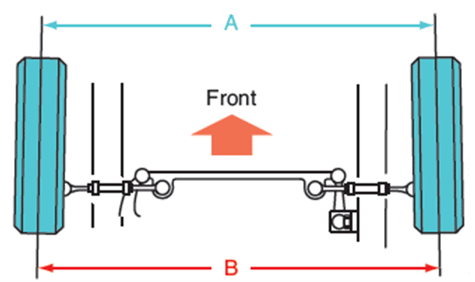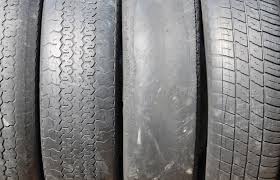Your car's wheel alignment is, simply put, critical.
It will determine whether your car starts sliding uncontrollably when you yank the steering wheel, or stays planted. It also dynamically changes as you go over bumps, turn the car, and brake/accelerate.
Whether you're a car enthusiast or a responsible vehicle owner, understanding how wheel alignment works can help you drive safely. With the help of innovative tools like Gyraline, checking your wheel alignment has never been easier.
"There's nothing more frightening than a loose 1980s car with 1.5 ° of toe out in the rear!" - Sam |
What is Wheel Alignment?
"Doing a wheel alignment" refers to adjusting the angles of the wheels so that they are set to the car manufacturer's specifications. These adjustments ensure that the wheels are perpendicular to the ground and parallel to each other and the vehicle's centerline. Proper alignment affects the vehicle's handling, tire wear, and overall safety.
The Three Key Angles
There are three main angles involved in wheel alignment: toe, camber, and caster. Each of these angles plays a specific role in how your car drives.
Camber
Camber is the angle of the wheel when viewed from the front of the vehicle. It measures how much the top of the wheel is tilted inward or outward.
- Negative Camber: When the top of the wheel tilts inward. This can improve handling but may cause uneven tire wear.
- Positive Camber: When the top of the wheel tilts outward. This is less common and can also lead to uneven tire wear.
Toe
Toe is the angle at which the wheels turn in or out when viewed from above.
- Toe-In: When the front of the wheels are closer together than the rear. This can improve stability but might cause tire wear on the outer edges.
- Toe-Out: When the front of the wheels are farther apart than the rear. This can improve cornering response but might cause tire wear on the inner edges.
Caster
Caster is the angle of the steering axis when viewed from the side of the vehicle. It affects the vehicle's steering and stability.
- Positive Caster: When the steering axis tilts toward the driver. This helps with straight-line stability and steering effort.
- Negative Caster: When the steering axis tilts away from the driver. This is less common in modern vehicles.
Why Wheel Alignment is Important
Proper wheel alignment is essential for several reasons:
-
Tire Longevity: Correct alignment prevents uneven tire wear, which can extend the life of your tires and save you money in the long run.
-
Improved Handling: A well-aligned vehicle handles better, making it easier to control and safer to drive, especially in emergency situations.
-
Fuel Efficiency: Misaligned wheels can cause the vehicle to work harder, reducing fuel efficiency and increasing operating costs.
-
Safety: Proper alignment ensures that your car tracks straight and true, reducing the risk of accidents caused by poor handling.
Signs You Need a Wheel Alignment
It's important to recognize the signs that your vehicle might need a wheel alignment:
- Uneven Tire Wear: Check your tires regularly for signs of uneven wear patterns.
- Vehicle Pulling: If your car pulls to one side when driving straight, it could be a sign of misalignment.
- Steering Wheel Off-Center: If your steering wheel is not centered when driving straight, your alignment may be off.
- Vibrations: If you feel vibrations in the steering wheel, especially at higher speeds, it could indicate alignment issues.
How Wheel Alignment is Done
A professional wheel alignment is typically performed using a specialized alignment machine that measures the angles of your wheels. Here’s a brief overview of the process:
- Inspection: The technician will inspect your suspension and steering components for any wear or damage.
- Measurements: The vehicle is placed on an alignment rack, and sensors are attached to the wheels to measure the current alignment angles.
- Adjustment: Based on the measurements, the technician will adjust the camber, toe, and caster angles to the manufacturer’s specifications.
- Verification: After adjustments, the vehicle is re-measured to ensure the alignment is correct.
Introducing Gyraline: Your Mobile Wheel Alignment App
With advancements in technology, checking your wheel alignment has become more accessible. Enter Gyraline, a cutting-edge mobile wheel alignment app that brings professional-grade alignment checks to your fingertips.
How Gyraline Works
Gyraline is designed to be user-friendly and highly accurate. Here’s how it works:
- Setup: Install your iPhone into the Gyraline case. The case is designed to work with most phone types and sizes.
- Connect: Start a new session in the Gyraline app
- Measure: Follow the instructions (press the little blue question mark) to measure the toe, camber, and caster angles. The app provides data once you measure them in and visual feedback.
- Analyze: The app analyzes the angles and reads it out to be compared to your vehicles specifications, providing you with a detailed report on your alignment status.
- Adjust: If adjustments are needed, you can take the report to a professional or make minor adjustments yourself if you're comfortable with the process.
Benefits of Gyraline
- Convenience: Perform alignment checks anytime, anywhere, without needing to visit a shop.
- Cost-Effective: Save money on frequent professional checks by monitoring your alignment at home.
- Accurate: Gyraline provides precise measurements, ensuring your vehicle's alignment is always in top condition.
- User-Friendly: The intuitive app interface makes it easy for anyone to use, regardless of technical expertise.
Conclusion
Understanding how wheel alignment works and keeping your vehicle properly aligned is essential for safety, performance, and cost savings. With innovative tools like Gyraline, maintaining optimal alignment has never been easier! Regularly check your alignment and address any issues promptly to ensure a smooth and safe driving experience.




